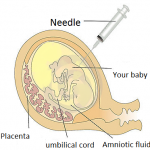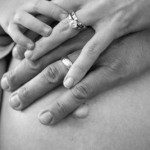PPH or postpartum haemorrhages are treated in stages depending on how major the PPH is and at what point the bleeding stops. Here is a step-by-step look at the treatment procedure of a PPH. 1. Injection or IV (intravenous) of either oxytocin or misoprostol, though oxytocin is the preferred medication, together with a massage of […]
labour
Causes of PPH
Four main causes of PPH have been identified, they are as follows: 1. A uterine atony, in which your uterus does not contract and continues to bleed after birth (it is usually caused by placental retainment or an infection) 2. A retained placenta, or just some of placental and/or fetal tissue. 3. Trauma, which includes […]

PPH risk factors
There are several risk factors for PPH, but these risk factors tend to be few and far between. Below is a list of the possible risk factorsjust so you can get an idea. antepartum haemorrhage placenta previa multiple pregnancy pre-eclampsia nulliparity a previous PPH maternal obesity Asian ethnic origin C-sections (planned and emergency, though emergency […]
PPH (Postpartum haemorrhage)
A PPH, or postpartum haemorrhage, is the leading cause of maternal death across the world and occurs in about 5% of births. A PPH involves the mother losing more than 500 mL of blood after she delivers her baby. If she loses more than 1000 mL it is considered to be a major PPH. Once […]
Caul births
A caul is a membrane that may cover a newborn’s head at birth, but it is absolutely nothing to worry about as it is harmless and easily removed by your doctor or midwife. The caul membrane can either be part of the amnion of the amniotic sac or a separate membrane which forms during your […]

Amniocentesis
Amniocentesis, also known as an Amniotic Fluid Test (AFT), is a diagnostic test usually undertaken between week 15 and week 20 of pregnancy, though it can be taken as early as week 11. It is a test in which about 20 mL of your amniotic fluid, which contains fetal tissues, is used to examine the […]

10 things not to do during labour
The advice we have given you on what you can do during labour is useful, but trust us our advice on what NOT to do is indispensable. If you follow these 10 tips it will save you a lot of trouble after your partner has delivered your baby. 1. Never eat in front of her. […]

Tips for dads during labour
There are several things you can do during labour to not only help your partner throughout the process, but also to rack up some of those ever important brownie points. So take a look and get ready for a challenging, but incredible, experience! 1. Prepare yourself. Read up on the entire labour process and what […]

Dads’ survival guide for labour
So you’re probably freaking out about what you should be doing during the birth of your baby. Mum’s job seems pretty straightforward – to get that baby of yours out into the world. Now is probably a good time to remind you that labour and birth is no walk in the park, so don’t ever […]
